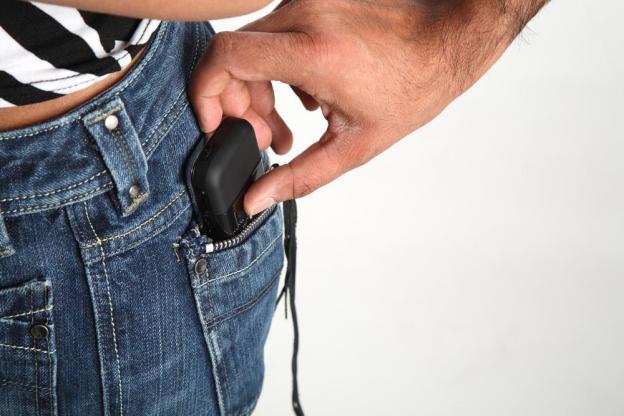
Cathy L. Lanier, the chief of police in Columbia believes “carriers are not innocent” when it comes to phone theft. They aren’t inclined to make phones less attractive to thieves, because, as she puts it, they’re “making a profit off this.” She’s referring to the fact the victim will usually have to buy a new phone, or must cough up cash to buy their way out of a contract.
Lanier’s comments are part of a New York Times piece on this very issue, suggesting the mobile industry is, “Looking the other way,” as phone thefts continue to rise. To highlight the problem, it’s said thefts involving a phone now account for half of all robberies in San Francisco, while last year the figure was 36 percent. While we may giggle at the stupidity of some thieves, the New York Times paints a far more serious picture, with one police lieutenant calling the gangs behind the major operations, “Well organized, very tech savvy, well trained and well funded.”
The industry’s primary weapon in the fight is the national, unified database which stores the IMEI numbers (every phone has a unique IMEI) attached to stolen phones, which, in theory, prevents them from being re-used. Databases like this are maintained all over the world, and in time, the U.S. database will be merged with international versions to help stop stolen phones being sent out of the country and re-connected elsewhere.
However, according to the New York Times, IMEI numbers are being altered so they no longer show-up on carrier’s blacklists, enabling them to be sold on and connected without a problem. The District Attorney for San Francisco, George Gascon, holds manufacturers responsible for not doing enough to secure mobile phones, saying, “Unlike other types of crimes, this is a crime that could be easily fixed with a technological solution.” The carriers, represented in the article by T-Mobile, aren’t helping themselves either. A T-Mobile representative could only say, “we do care very deeply about this,” but was quiet about any potential solutions.
 Kill switches probably aren’t the answer
Kill switches probably aren’t the answer
So is this, as the district attorney says, an easily fixable problem? There are several safeguards we as smartphone users can already take to make the loss of a phone less problematic, with several companies offering tracking solutions, and Apple’s Find My iPhone device tracking system coming as standard. But the DA wants manufacturers to include a, “kill switch,” which sounds like a cross between an EMP device and the system used to convey messages to Ethan Hunt.
This isn’t the first time the San Francisco district attorney has brought up the idea of a kill switch, but he has been frustrated by the industry’s lack of interest in developing one, which he claimed is due to profits. A VP of mobile security firm Mobile Iron told Information Week earlier this year that kill switches were, “Technically feasible,” but offered few advantages outside of the business world. For regular users, he saw the available remote wipe features pre-installed on phones, or systems like Norton Mobile Security, as being sufficient.
Kill switches are already used by manufacturers, and although Apple has never used the one installed on the iPhone, Google has flexed its muscles twice in the past, each time to remove malicious applications after they had been installed on active Android phones. The trouble with the idea of a central kill switch is not that it could inevitably be bypassed (Apple’s has been deactivated in the past through jailbreaking the phone), but who would be in control. Giving carriers the legal right to zap a phone from existence may sound good after it has been stolen, but less so if excuses could be found for using it against late payers, modified phones, or those installing unapproved software.
Police forces around the world have successfully recovered stolen phones using Find My iPhone and similar systems – the Metropolitan Police in the UK even recommends turning it on, and has a guide on how to do so on its website – but don’t always have the resources to follow up each case, which can be frustrating for victims of crime.
There’s no doubt Cathy Lanier and District Attorney Gascon are correct in one sense, that the problem of smartphone crime needs addressing, but we’re not convinced kill switches are the answer. However, if a truly international database of stolen IMEI numbers could be implemented quickly, and all networks around the world were compelled to update it, this along with systems such as fingerprint scanners fitted to phones and the existing remote wipe features, could at the very least stem the tide.




